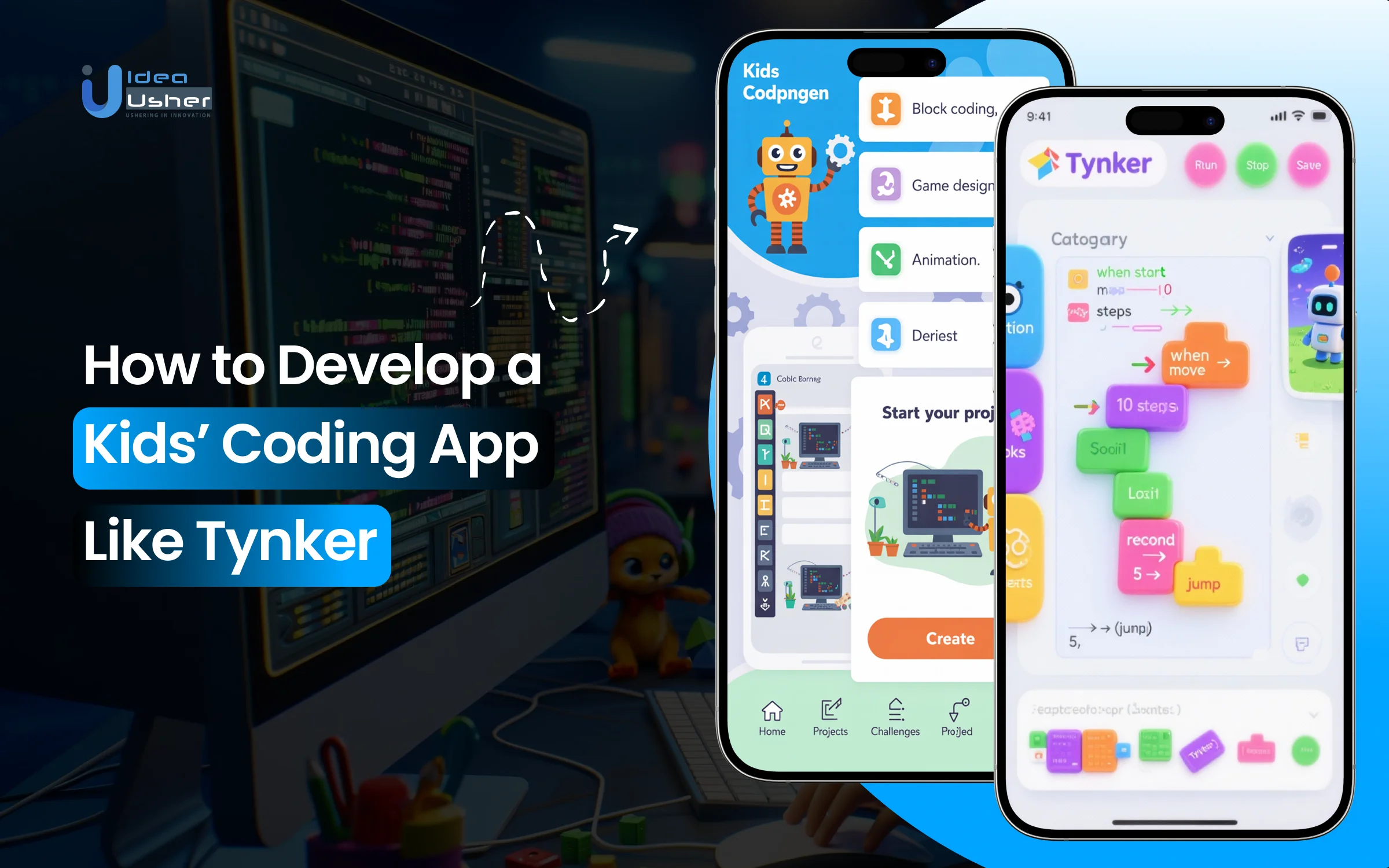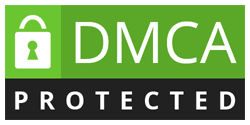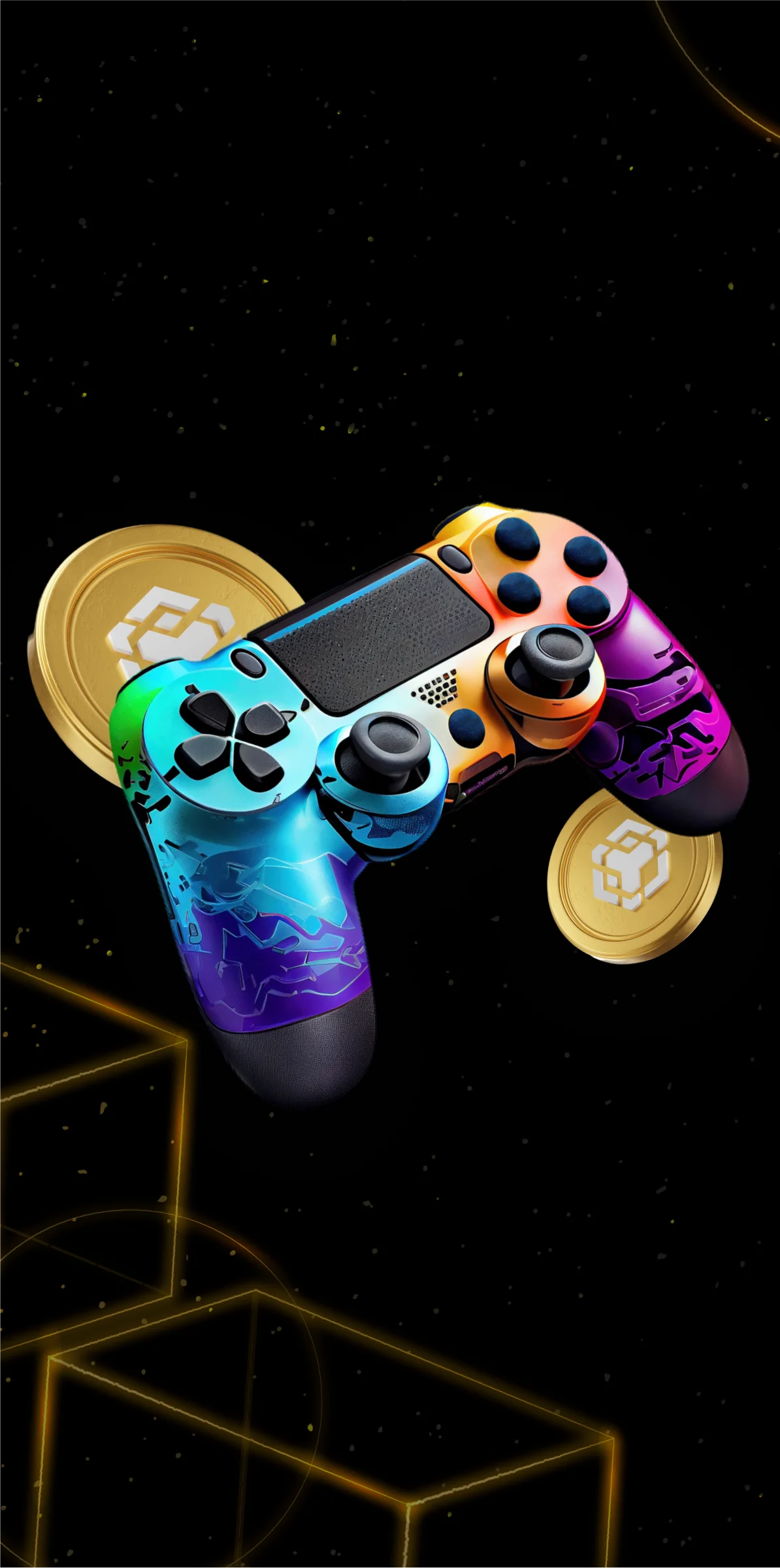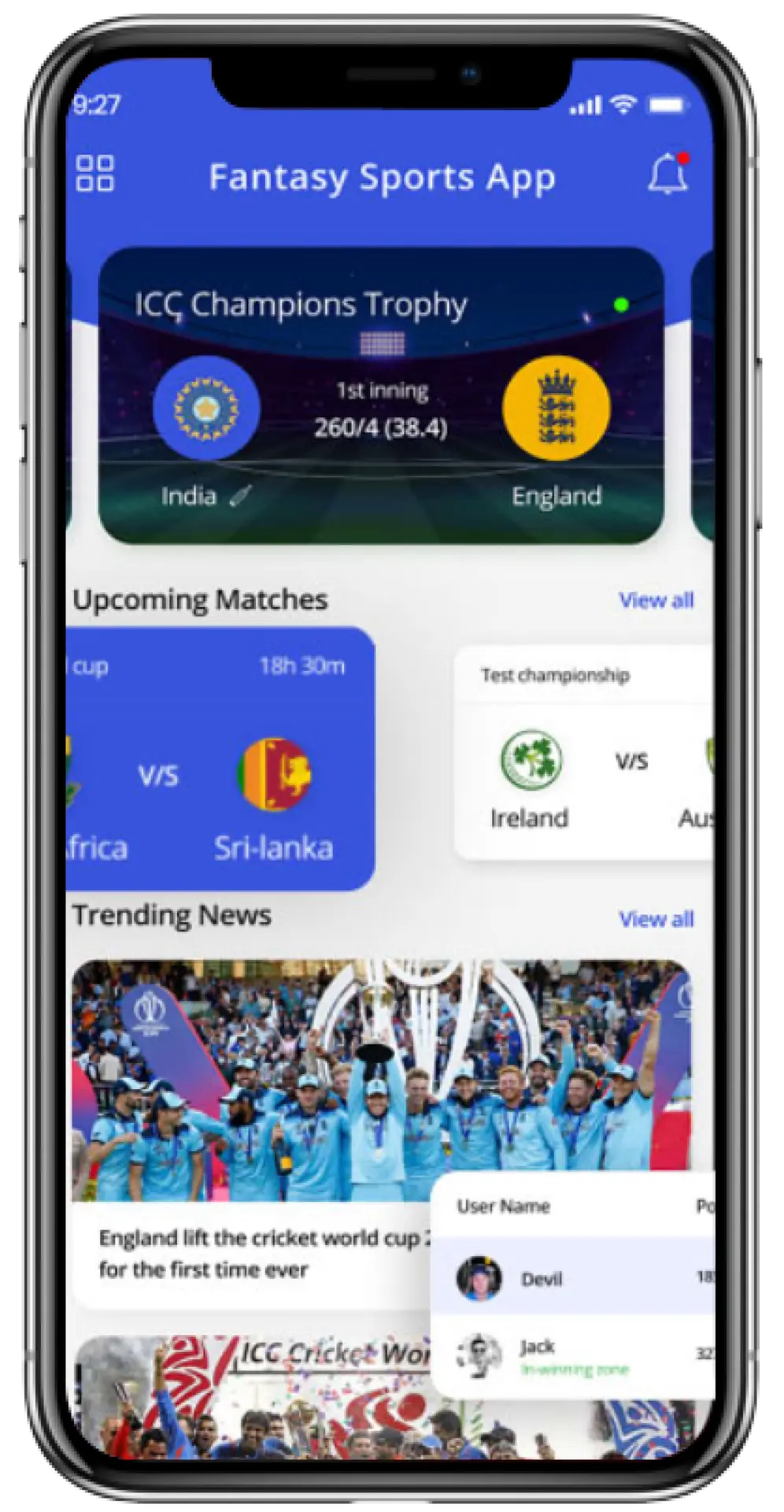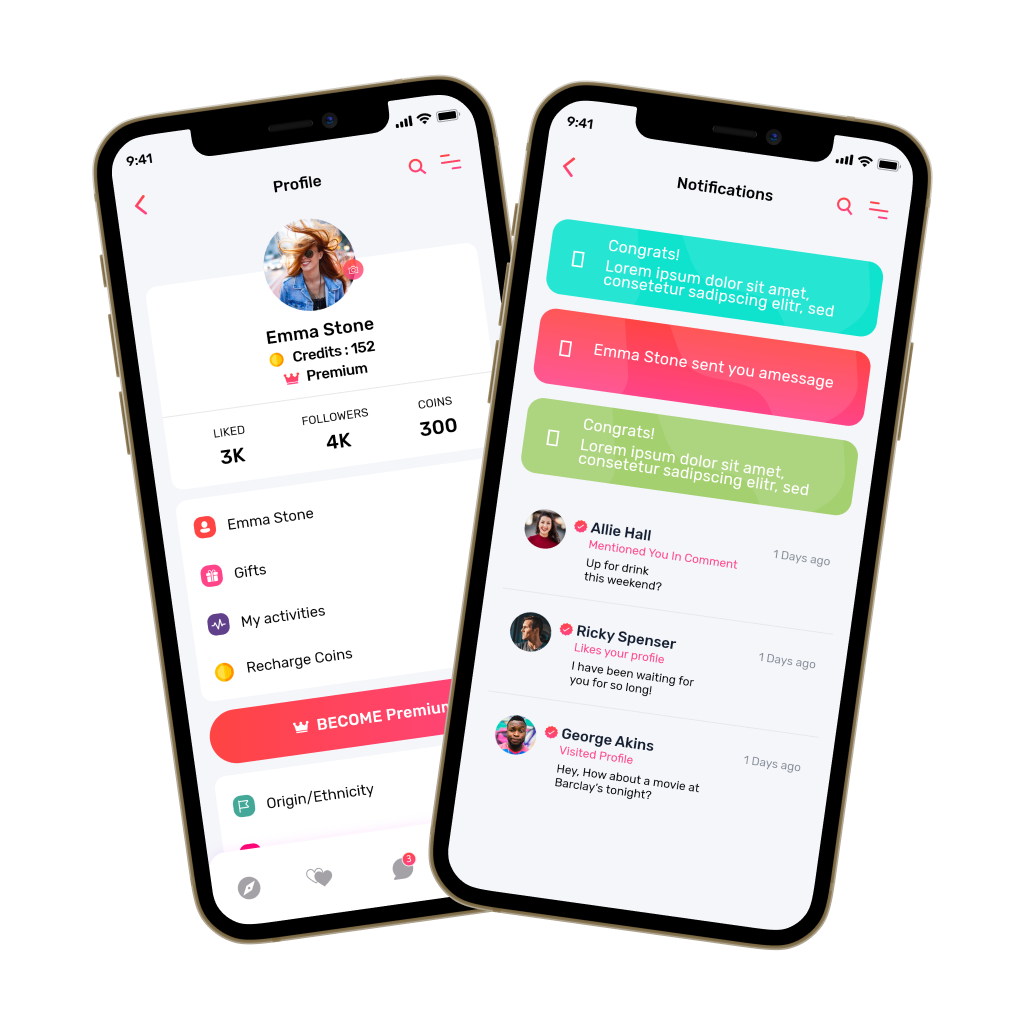Kids today are growing up surrounded by technology, yet many still lack access to tools that show how it really works. Parents and schools want learning that feels playful, creative, and meaningful, not overwhelming or too technical. That’s why building a kids’ coding app like Tynker is such an exciting opportunity, turning coding into a game-like journey where children explore logic, storytelling, and problem-solving at their own pace.
These apps succeed by combining visual coding blocks, interactive challenges, animated tutorials, and kid-friendly design. Behind these playful interfaces are thoughtful technologies like drag-and-drop editors, gamified learning paths, cloud-based progress tracking, and secure child-focused UX. Together, these elements turn coding into a creative adventure rather than a traditional subject.
In this guide, we’ll break down how to develop a kids’ coding app, covering essential features, learning frameworks, the tech stack, and the design choices that make platforms like Tynker work so well. With IdeaUsher helping shape the strategy and execution, you gain a solid roadmap for building an engaging, educational, and child-safe coding experience.
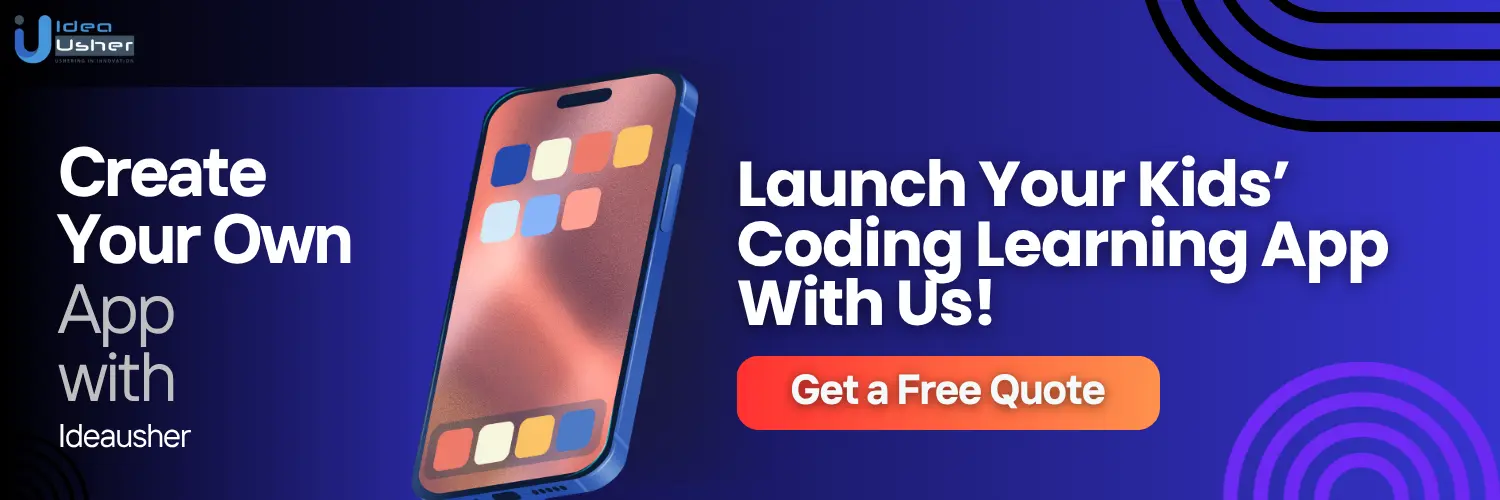
What is a Kids’ Coding App, Tynker?
Tynker is a structured, child-friendly coding platform designed for ages 5 to 18, created to teach programming through a research-backed, play-based learning approach. It introduces foundational coding concepts using visual, drag-and-drop blocks and gradually transitions children to real programming languages like Python and JavaScript as they advance. Tynker is widely used in homes and schools and is recognized for improving problem-solving, computational thinking, and creativity through interactive, age-appropriate digital learning experiences.
The app keeps learning fun and supportive with adaptive puzzles, challenges, stories, and creative projects that grow from block-based to real programming, letting kids design games, animations, robots, and Minecraft mods while promoting independent learning and supporting classroom STEM instruction.
- Builds strong foundational coding skills through a gradual progression from visual block coding to real programming languages like Python and JavaScript.
- Improves critical thinking, logic, and problem-solving with structured puzzles, challenges, and project-based learning.
- Encourages creativity and innovation as children design their own games, animations, stories, apps, and interactive projects.
- Supports STEM learning and computational thinking, helping children gain future-ready skills in a fun, low-pressure environment.
- Highly engaging, play-based content keeps kids motivated with games, quests, stories, and themed activities.
- Age-appropriate learning pathways ensure content matches a child’s skill level from early learners to advanced coders.
- Smooth transition to real coding languages allows children to build confidence and continue learning as they grow.
- Compatible with real-world tools and experiences, including robotics, drones, and Minecraft modding.
- Parent and teacher dashboards provide progress tracking and skill insights, allowing adults to stay involved and support learning.
Business Model
Tynker’s business model blends consumer and educational markets to deliver a scalable, engaging, and globally adaptable coding platform for kids.
- Tynker operates a dual-market model:
- Home/consumer segment – direct to parents and kids for use at home.
- Education/institutional segment – licensing to schools, districts, and educators.
- It uses a freemium approach: many users access a free tier, while the premium version offers more content and advanced tools.
- It partners with companies and robot makers to create value-added learning experiences.
- Global expansion and vertical scaling allow the curriculum to work across multiple countries and education systems.
- The product is positioned as a coding platform with curriculum, gamified lessons, and creation tools that drive ongoing engagement rather than a one-time sale.
Revenue Model
Tynker follows a multi-stream revenue model built around subscriptions, school licensing, and value-added partnerships. Its approach blends consumer SaaS with education-focused institutional sales.
- Consumer/Home Subscriptions: Parents and learners subscribe to Tynker for full access to coding lessons and games. This is Tynker’s main recurring revenue stream.
- Individual Annual Plan: ~US $180/year (≈ US $15/month)
- Quarterly Plan: ~US $60 per quarter
- Family Annual Plan (up to 3 children): ~US $225/year (≈ US $18.75/month)
- Lifetime Access: One-time fee (e.g., US $360 individual / US $540 family)
- App Store Pricing: US $11.99–14.99 per month, depending on tablet-only or tablet+web access
These plans unlock advanced coding paths such as Python, JavaScript, game development, robotics, and Minecraft modding.
- School & Institutional Licensing: Tynker sells licenses to schools and districts, with pricing based on student count and deployment scale. These contracts generate higher revenue and support large-scale adoption.
- Freemium to Premium Upselling: Tynker offers free trials, earning revenue when users upgrade to premium plans for full access and advanced features.
- Partnerships & Integrations: Tynker partners with hardware companies, toy brands, and edtech firms to expand its ecosystem and earn from joint modules, licensing, and branded content.
Learning Frameworks Behind Kids’ Coding Learning Apps
Kids’ coding apps work best when built on proven educational frameworks that match how children naturally learn. These frameworks ensure meaningful skill development and keep learning engaging and age-appropriate.
| Learning Framework | Explanation | Why It Matters for a Kids’ Coding App |
| Constructivist Learning | Children learn by creating projects, experimenting, and discovering outcomes independently. | Encourages hands-on learning and boosts retention as kids build games, stories, or animations through exploration. |
| Scaffolded Lesson Progression | Concepts are taught gradually from simple to advanced in structured steps. | Builds confidence, prevents frustration, and supports consistent learning progress for different age groups. |
| Computational Thinking | Focuses on decomposition, pattern recognition, abstraction, and algorithmic thinking. | Develops logical reasoning skills essential for coding and real-world problem solving. |
| Game-Based Learning | Uses missions, rewards, stories, and challenges to teach coding concepts playfully. | Increases engagement, reduces drop-offs, and maintains high learning motivation throughout the app experience. |
| Project-Based Learning (PBL) | Kids apply concepts by creating real, interactive projects like games or animations. | Helps children understand the purpose behind coding while encouraging creativity and independence. |
| Mastery-Based Learning | Kids only advance after demonstrating full understanding of each concept. | Ensures strong foundational skills and supports long-term coding proficiency. |
| Personalized Learning Paths | Lessons adapt to each child’s pace, age, and skill level. | Improves learning outcomes, increases retention, and supports a broader age range within the app. |

Why Do 94% of Students Believe Coding Skills Are Essential for Their Future Careers?
The Global Online Coding for Kids Market is projected to reach USD 12.40 billion by 2034, up from USD 3.12 billion in 2024, growing at a CAGR of 14.8% from 2025 to 2034. This impressive rise highlights how digital coding platforms are becoming one of the most in-demand learning categories worldwide.
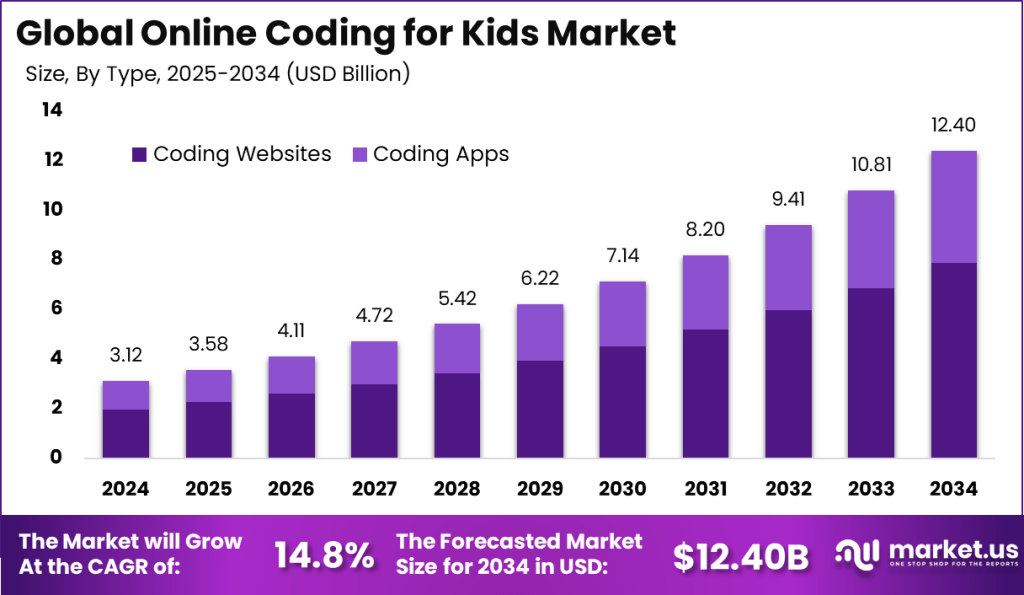
Following global growth, 94% of students say coding and app development are important for their future jobs. This shows learner-driven demand for coding education, making it a strong opportunity for building kids’ coding apps like Tynker.
A. Students Are Actively Seeking Future-Ready Skills
A workforce-oriented mindset is emerging earlier than ever and kids themselves recognize that coding is a gateway to future careers.
- 92% of U.S. students say coding is important in society today.
- 81% of UK children aged 8–11 believe technology skills will play a crucial role in their future jobs.
- 60% of teens globally say they want more tech, coding, or digital courses added to their school curriculum.
Kids already want coding education, which reduces adoption friction for new apps in the market.
B. High Engagement With Coding Tools & Digital Learning
Children increasingly recognize the significance of coding and are already engaging with digital learning tools at a high frequency.
- 70% of UK children want more technology integrated into their curriculum, with coding among the top requested subjects.
- In the U.S., 67% of middle-school students have tried at least one coding activity through apps or school programs.
- A study of K–12 learners found that students using coding apps showed significantly higher problem-solving performance compared to non-users.
Engagement is strong, validating the appeal of interactive, gamified coding platforms for kids.
C. Strong Parent Support & Willingness to Invest
Parents play a major role in choosing learning apps and their interest in coding education is growing rapidly.
- 77% of U.S. parents believe coding is one of the most important skills for their child’s future.
- In the UK, over 200% rise in parental interest has been recorded for coding and game-design programs since 2019.
- 92% of American preschoolers have access to digital devices at home, paving the way for early adoption.
Parents value coding as a career-boosting skill, which supports monetization and subscription-based models.
These statistics reveal a strong trend: children, parents, and educators view coding as an essential future skill and seek quality digital platforms for learning. With growing demand, motivated students, proven outcomes, and an expanding market, now is an ideal time to launch a kids’ coding app like Tynker. Focusing on engaging content, adaptive learning, and child-centered design allows developers to enter a thriving space with long-term growth and impact.
Key Features to Integrate in a Kids’ Coding App Like Tynker
A kids’ coding app like Tynker needs features that make learning fun, intuitive, and hands-on. Here’s a quick look at the essential features that help kids explore coding with confidence and creativity.

1. Visual Block-Based Coding Interface
A kids’ coding app should feature drag-and-drop visual coding with color-coded blocks for core concepts like loops, sequencing, events, and variables. It aims to help children grasp computational thinking before transitioning to text-based programming.
2. Interactive Lessons & Guided Tutorials
Structured, interactive lessons keep children engaged while learning coding. They should combine guidance, animations, and simple explanations to simplify abstract concepts. Age-based paths and short activities create a clear, progressive learning journey for beginners.
3. Game-Based Learning & Coding Challenges
To keep motivation, the app should feature story missions, coding puzzles, and gamified challenges that reward progress. Kids stay engaged when learning is fun, and game-based tasks help develop logic and problem-solving skills. Badges, stars, and level progression maintain interest.
4. Project Builder & Creation Studio
A creation section allows kids to build games, animations, and stories, serving as the app’s heart to foster creativity, experimentation, and self-expression. An asset library with characters, sounds, and backgrounds helps them bring ideas to life.
5. Progress Tracking & Parent Dashboard
A progress system shows parents how their child learns, displaying completed lessons, strengths, and skill growth over time. This transparency builds trust and encourages positive screen habits, making the platform valuable for families seeking structured digital learning.
6. Age-Appropriate Learning Paths
A successful kids’ coding app must adapt to different developmental stages by providing paths for early learners, pre-teens, and older kids, allowing each child to learn at their own pace. An adaptive flow recommends suitable activities, preventing frustration and boredom.
7. Transition from Blocks to Real Coding Languages
As children grow, the platform should gradually introduce them to Python, JavaScript, or similar languages. A block-to-text conversion mode helps learners transition from visual programming to code. This progression boosts the app’s lifespan and educational value.
8. Child-Safe Environment & Secure Accounts
Safety is essential for kids’ apps, requiring COPPA/KidSAFE compliance, secure logins, no ads, moderated interactions, and controlled sharing for a safe, distraction-free learning environment.
9. Teacher Tools & Classroom Support
The app should include teacher dashboards, classroom management tools, and curriculum-aligned lesson plans for schools. These features help educators integrate coding easily into their classrooms and support standards-based instruction for computer science and STEM.
10. Multi-Platform Compatibility
To reach the widest audience, the app should function smoothly across mobile devices, tablets, and web browsers. A responsive design makes the platform suitable for home learning, classroom environments, and on-the-go usage.
Age-Specific Learning Paths for Coding Apps
Offering age-specific learning paths shows your coding app can scale with users, a key factor for investors evaluating long-term viability and retention. Structured pathways that grow with children ensure ongoing engagement and recurring revenue.

1. Ages 5–7: Foundations Through Drag-and-Drop Logic
At this early stage, children interact with visual block coding, simple sequencing, and cause-and-effect puzzles. The focus is on playful logic, interactive stories, and easy problem-solving tasks that build confidence without introducing text-based syntax.
2. Ages 8–10: Animations, Events & Beginner Loops
Learners begin creating animations, simple games, and interactive stories. They explore core concepts like events, loops, and conditional logic through guided tutorials and gamified challenges, preparing them for more technical skills ahead.
3. Ages 11–13: Transition to Python or JavaScript Basics
This stage introduces real coding with beginner-friendly Python or JavaScript. Kids start writing short scripts, debugging simple errors, and connecting code blocks to written commands, bridging visual and text-based coding in a smooth learning transition.
4. Ages 14+: Advanced Game Development & App Building
Older learners dive into advanced game design, app development, robotics integrations, and algorithmic thinking. They work on portfolio-worthy projects, preparing for STEM pathways, competitions, and future careers.

How to Develop a Kids’ Coding App Like Tynker?
Creating a kids’ coding app like Tynker starts with blending fun, interactive learning with solid technical planning. Here’s a quick look at the core steps that turn a concept into a fully functional, engaging educational platform.
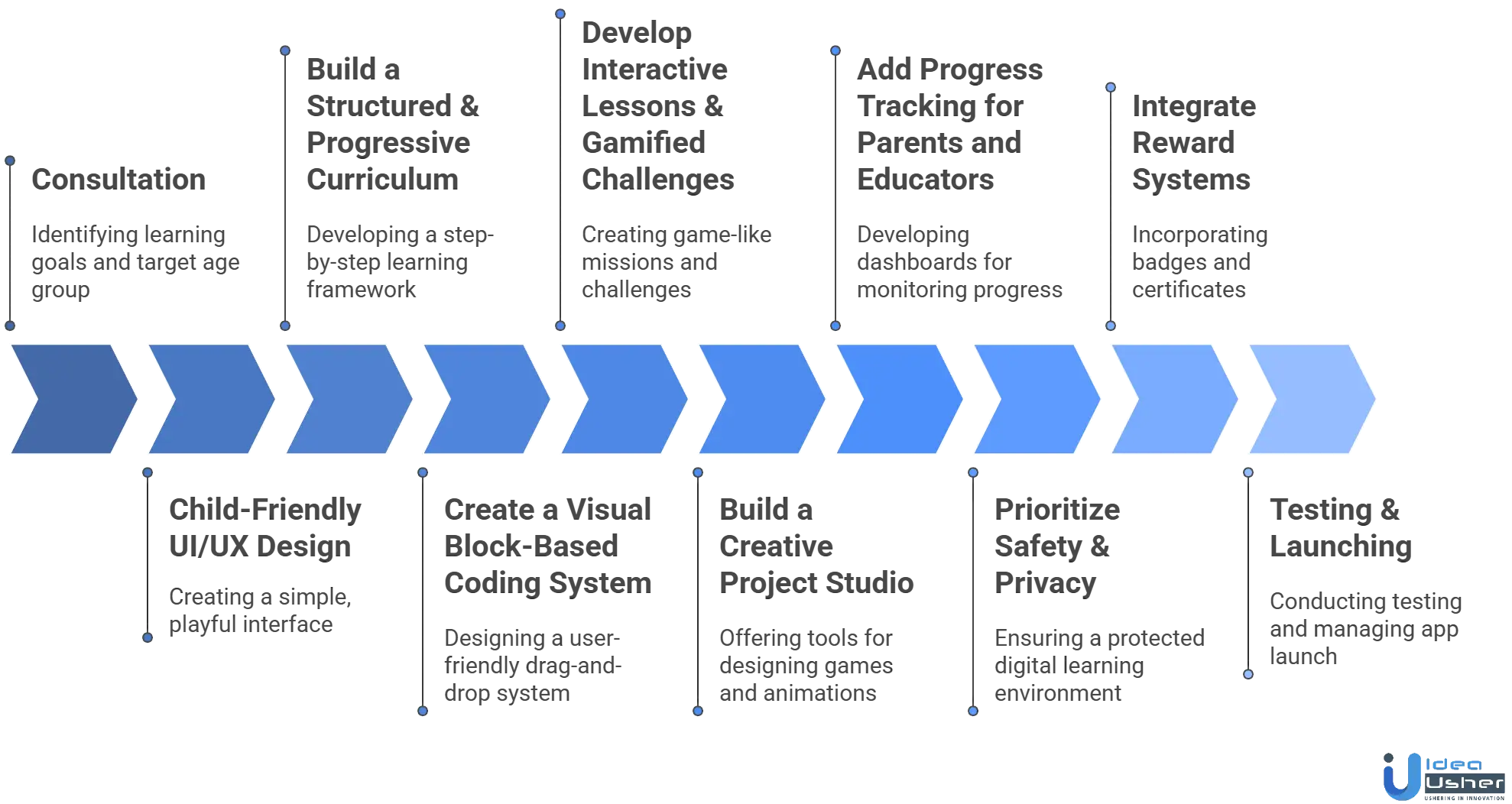
1. Consultation
Our development process starts by identifying learning goals and target age group. We analyze children’s understanding of logic, patterns, and problem-solving at various stages. This guides us in designing an engaging, age-appropriate curriculum that teaches basic coding concepts. Setting these goals early ensures an educational, aligned learning journey.
2. Child-Friendly UI/UX Design
Our design team creates a simple, playful, intuitive interface for young learners, using bright visuals, clear icons, friendly characters, and minimal text so even early readers can navigate independently. The layout promotes exploration and reduces overload, making the environment welcoming, safe, and fun for kids.
3. Build a Structured and Progressive Curriculum
We develop a technical framework for step-by-step learning, starting with basics like sequencing and loops, then advancing to complex logic. While the client works with educators to define the curriculum, we advise on turning those goals into interactive modules, ensuring lessons build on each other and sustain the child’s learning momentum.
4. Create a Visual Block-Based Coding System
Our developers create a user-friendly drag-and-drop block coding system that removes syntax barriers. The color-coded blocks snap together smoothly and visually show each action’s function. With real-time previews, children see how their code affects characters or objects, making learning interactive and rewarding.
5. Develop Interactive Lessons and Gamified Challenges
To keep learning fun, we create game-like missions, mini-challenges, and story lessons that teach coding through play. Our team ensures each challenge has clear goals, engaging visuals, and rewards like stars, achievements, and character prizes. These gamified features motivate children to stay engaged and keep returning to the app.
6. Build a Creative Project Studio
We offer a creation studio for children to design games, animations, and stories. Developers provide tools for dragging characters, adding behaviors, sound effects, and physics. This fosters creativity, experimentation, and hands-on learning, turning coding lessons into personal projects.
7. Add Progress Tracking for Parents and Educators
We develop dashboards showing a child’s progress, lessons, strengths, and milestones to support families and teachers. These insights help adults stay involved and recognize learning patterns. For educators, we provide tools to assign lessons and monitor group performance, fitting both home and school use.
8. Prioritize Safety, Privacy, and Kid-Friendly Design
Child safety is central to our approach. We follow strict safety and data protection standards, avoid intrusive ads, and provide secure login methods for children. If sharing or community features are included, we implement moderation and safety filters to ensure a protected digital learning environment.
9. Integrate Motivation and Reward Systems
We incorporate meaningful reward systems such as badges, certificates, and level unlocks to celebrate progress and maintain motivation. Our aim is to encourage learning through positive reinforcement, giving kids a sense of achievement without adding pressure or competitiveness.
10. Testing & Launching
We conduct technical and usability testing to ensure smooth performance, clear navigation, and stable gameplay. The client handles real user testing, and we apply the feedback to refine the experience. Once optimized, we manage the app launch, including store submission and post-launch stabilization for a seamless rollout.
Cost to Build a Kids’ Coding App Like Tynker
Building a kids’ coding app like Tynker involves balancing engaging learning features with robust safety and tech requirements. Here’s a quick look at the key factors that shape the overall development cost.
| Development Phase | Description | Estimated Cost |
| Consultation | Requirement gathering, competitor analysis, defining learning goals, outlining key features, and drafting the development roadmap. | $5,000 – $10,000 |
| UI/UX Design | Designing a child-friendly interface, wireframes, visual assets, animations, and interaction flows tailored for young learners. | $8,000 – $15,000 |
| Curriculum & Content Design | Developing structured coding lessons, game mechanics, puzzles, stories, and age-based learning pathways. | $12,000 – $19,000 |
| Frontend Development | Building the user interface, block-based coding system, interactive screens, gameplay visuals, and animations. | $18,000 – $33,000 |
| Backend Development | Server setup, database architecture, user accounts, progress tracking systems, dashboards, and secure data handling. | $22,000 – $37,000 |
| Gamification & Project Creator Module | Integrating rewards, badges, levels, and building a creation studio where children can design games and animations. | $19,000 – $16,000 |
| Testing (Kids + Parents) | Functional testing, device compatibility checks, safety testing, and real-user testing sessions with kids and caregivers. | $6,000 – $12,000 |
| Deployment & Launch | Publishing on app stores, server deployment, optimization, and launch support. | $7,000 – $13,000 |
| Post-Launch Maintenance | Fixing bugs, updating lessons, optimizing UI/UX, and ensuring smooth performance during early adoption. | $5,000 – $10,000 |
Total Estimated Cost: $66,000 – $130,000
Note: Actual development costs vary based on app complexity, features, lesson variety, animation, safety, and extras like coding modes, robotics, or dashboards.
Consult IdeaUsher for a custom cost estimate and plan. We help turn your vision into a safe, engaging, and scalable kids’ coding platform designed for creativity and growth.
SWOT Analysis of Kids’ Coding App like Tynker
Understanding Tynker’s strengths, weaknesses, opportunities, and threats helps founders make smarter decisions when planning, designing, and positioning their own kids’ coding platform. This analysis reveals where Tynker excels and where new entrants can innovate to stand out.
A. Strengths
These are the key advantages that make Tynker a leading kids’ coding platform and set the benchmark for new entrants in the market.
- Strong Brand Presence in EdTech: Tynker is widely recognized in the kids’ coding space and used in 150,000+ schools worldwide, giving it credibility and trust among parents and educators.
- Comprehensive Learning Pathway: It excels in offering a structured progression from block-based coding to real languages like Python, JavaScript, and more, supporting long-term learning.
- Highly Engaging, Gamified Content: Story-based modules, puzzles, quests, and projects make learning fun and interactive, increasing retention among children.
- Extensive Curriculum & Lesson Library: The platform covers thousands of lessons across coding, robotics, AI basics, Minecraft modding, and game design — creating deep value for paid users.
- Strong School & Classroom Integration: With teacher dashboards, classroom management tools, and standards-aligned curriculum, Tynker has a solid position in both home and school markets.
B. Weaknesses
These limitations reveal gaps in Tynker’s offering where new apps can innovate and position themselves more effectively.
- High Subscription Costs for Many Families; Premium pricing may limit adoption in budget-sensitive segments, creating opportunity for more affordable competitors.
- Steep Learning Curve for Very Young Kids: While Tynker Junior exists, the main platform can feel overwhelming for early learners (ages 4–6) compared to simpler alternatives like ScratchJr.
- Limited Personalization & Adaptive Learning: Lessons are structured but not highly adaptive. An app with stronger AI-driven personalization can stand out.
- Complex Interface for Some Users: The abundance of tools and features can be confusing for young children or first-time coders.
- Less Social/Community Interaction: Compared to platforms like Scratch, Tynker’s community and sharing features are more limited, reducing collaborative learning potential.

C. Opportunities
These emerging trends and unmet needs highlight where entrepreneurs can create stronger value and capture market share.
- Growing Global Demand for Coding Skills: With 94% of students believing coding matters for future jobs and parents prioritizing tech education, demand for kids’ coding platforms is skyrocketing.
- Personalized, AI-Driven Learning: A new app can differentiate by offering adaptive lesson paths, AI tutors, and customized feedback features that Tynker lacks.
- More Affordable Subscription Models: Competitively priced or flexible freemium options could attract parents who find Tynker expensive.
- Focus on Early Childhood Market: Young learners (ages 3–7) represent a huge and growing segment where Tynker has limited depth, allowing new entrants to dominate.
- Community-Based Learning & Kid Creators: A platform built around sharing, collaboration, and peer creativity could attract students seeking social engagement.
- New Tech Integrations: Robotics kits, VR/AR learning, voice-based coding, and AI story/game generators offer new competitive advantages.
D. Threats
These external challenges reflect factors that can impact any coding-education platform entering this competitive space.
- Competition from Free Alternatives: Scratch, Code.org, and many open-source tools provide high-quality coding education at no cost.
- EdTech Market Saturation: The number of coding apps and STEM tools is rising, meaning differentiation is essential to stand out.
- School Budget Constraints: Tynker’s success in schools depends on budgets that fluctuate and can impact adoption rates.
- Rapid Tech Changes: As AI and new learning models evolve, platforms must innovate quickly or risk falling behind.
- Parental Concerns About Screen Time: Parents increasingly prefer apps that promote balanced use; platforms without controls may face resistance from families.
Challenges & Solutions During Kids’ Coding Learning App Development
Building a kids’ coding app comes with unique hurdles, from engagement to safety and fast-changing tech. Here’s a quick look at the challenges developers face and the solutions that keep the learning experience smooth and effective.
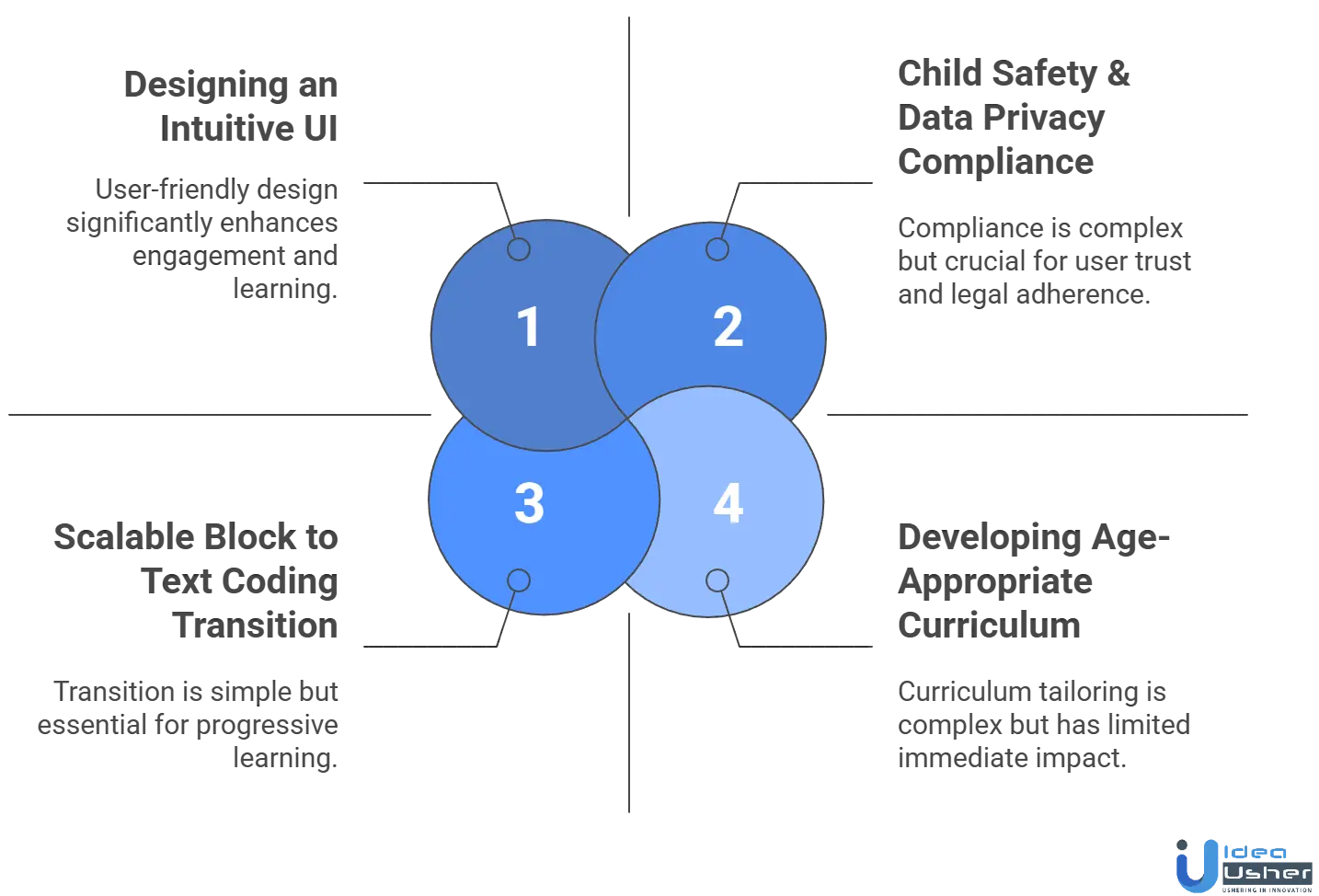
1. Designing an Interface Young Kids Can Easily Use
Challenge: Creating an intuitive interface for young kids is difficult because early learners have limited reading skills and struggle with cluttered screens and confusing navigation.
Solution: We design a visual-first, child-friendly UI with clear icons, guided animations, simple gestures, and progressive onboarding. Our designers test prototypes with real children to ensure independent use and consistently smooth navigation across the entire kids coding app experience.
2. Developing an Age-Appropriate Coding Curriculum
Challenge: Designing a single curriculum for different ages is difficult because cognitive abilities evolve fast, requiring tailored difficulty levels and teaching styles.
Solution: We create age specific learning paths supported by child development research. Our curriculum team builds separate logic tracks for each age group and tests lesson clarity to ensure kids progress smoothly from simple blocks to structured coding concepts.
3. Ensuring Child Safety & Data Privacy Compliance
Challenge: Children’s apps must meet strict safety laws, making compliance complicated for login systems, data handling, content moderation, and user interactions.
Solution: We implement COPPA aligned workflows, secure authentication, minimal data storage, and controlled communication layers. Our developers collaborate with compliance specialists to ensure safety, privacy transparency, and responsible data handling throughout the kids coding app ecosystem.
4. Building a Scalable Block to Text Coding Transition
Challenge: Moving kids from visual blocks to text coding is technically demanding and requires thoughtful engineering to avoid overwhelming young learners.
Solution: We build a hybrid coding engine that pairs blocks with syntax previews. Our team designs switchable modes so kids can understand real code gradually while maintaining confidence as they advance through the kids coding app structure.
Conclusion
A strong approach to kids’ coding app like Tynker development starts with understanding how children learn through play, structure, and guided problem solving. When you combine intuitive design, interactive challenges, and age-appropriate learning paths, you create an app that feels both educational and enjoyable. The goal is to help young learners gain confidence while exploring coding concepts at their own pace. With the right blend of creativity, functionality, and child safety, you can build a platform that supports real skill growth and encourages long term engagement in digital learning.
Build Your Kids’ Coding App with IdeaUsher!
If you’re planning to create a coding platform that engages young learners and makes programming fun, our team can help bring that vision to life.
Our ex-FAANG/MAANG developers design secure, scalable, and interactive learning apps using the right mix of gamification, visual programming, and personalized learning paths. With our experience in edtech development, you get a complete solution from concept to launch.
Reach out to us for a free consultation and see how we can help you build a polished, market-ready coding app for kids.
Work with Ex-MAANG developers to build next-gen apps schedule your consultation now
FAQs
A kids’ coding app should focus on foundational concepts such as sequencing, loops, conditionals, debugging, and problem solving. These skills help children understand how logic works while keeping learning fun through interactive lessons and game style tasks.
Visual learning is essential because it helps children grasp programming logic through blocks, animations, and guides. It removes complexity, builds confidence, and creates an easy entry point for young learners who are not yet ready for text-based coding.
The app should include secure login options, parental controls, no open chat features, and strict data privacy handling. Since the audience is young, strong compliance with child safety regulations ensures a trustworthy and protected learning environment.
Gamification boosts engagement by turning lessons into challenges, rewards, and levels. This structure encourages consistent practice, keeps children motivated, and helps them learn programming concepts through repetition and achievement-based progress.
